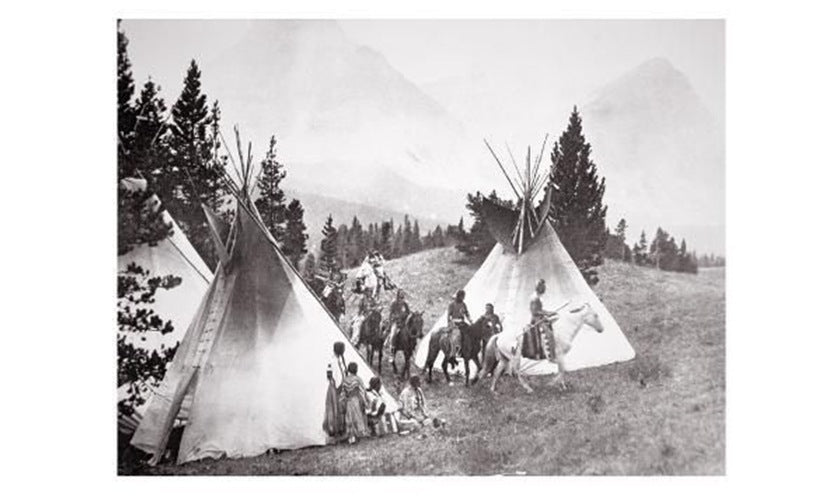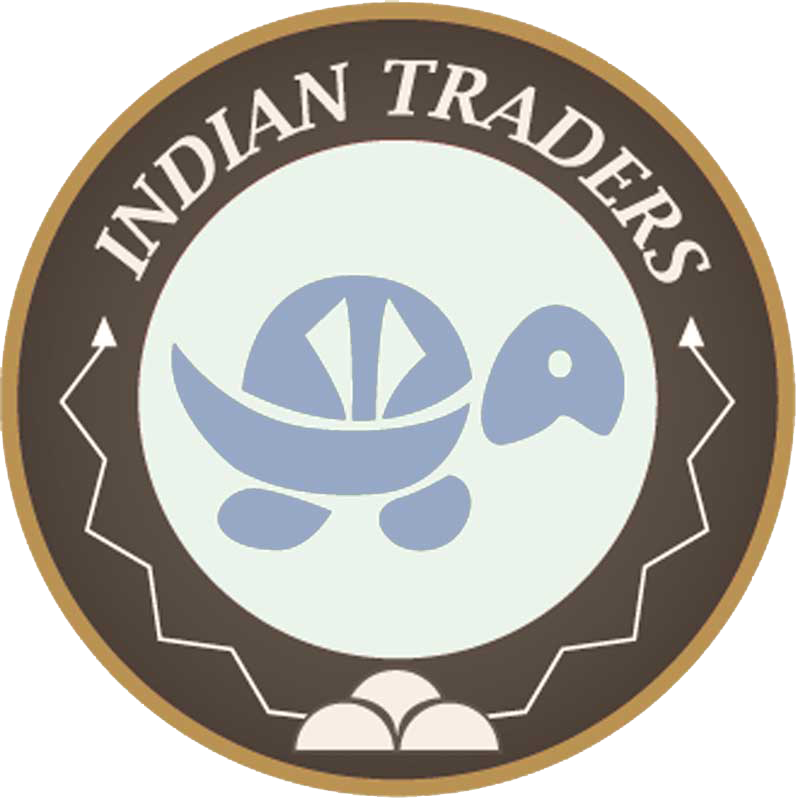
You may have heard the term “Indian Trade”, which refers to the historic trade relationship between the Native American Peoples and Europeans on the North American continent. It operated from the first arrival of the Spanish, French, Portuguese, English, and other explorers, and settlers up until the late 1930s. Yet the story of “American Indian” trade goes back much further than this, and trade between tribal groups and regions has been occurring for thousands of years.
Archaeologists have found a lot of evidence of widespread trade between prehistoric indigenous groups in ancient villages, campsites, graves, and mounds. This included the trade of flint, copper, marine shell products, and obsidian along east-west trade routes connecting the Atlantic and Pacific coasts.
For example, “Spanish Diggings” is a quarry site in Wyoming that was “discovered” in 1880 by a stockman and was examined in 1894 by a University of Wyoming Geology professor. It was determined that up to millions of tons of quartzite had been excavated by indigenous people 10,000 years ago – most likely for trade with others.
The Ancient Anasazi
Early southwestern Indigenous Peoples primarily exchanged their goods with Mesoamerican civilizations. One thousand years ago, the Anasazi Indians who resided in the Southwest were a cornerstone of the trade network between the Pacific Northwest and Mesoamerican civilizations. They provided turquoise and obsidian to tribes along the Gulf of California and, in return, received Native American jewelry crafted from Pacific seashells. They traded turquoise with Mesoamerican partners for pottery, precious feathers (including from Paquime-bred Macaw parrots), and other ornaments, and provided a channel for the spread of Mesoamerican agricultural techniques, religious customs, materials and craftsmanship throughout North America.
Indian Trade up to the 1500s…
“Indian” trade involved both trader cultures and individual traders, who were channels between tribes separated by long distances. Male and female traders met at strategically placed trading centers, many situated at specific hubs or along major river routes. An extensive and expansive trade network with Trade Centers developed. These included, for example, Taos Pueblo in New Mexico, Dalles on the Columbia River in Oregon, Niagara Falls and Sault Sainte Marie in the Northeast, and Hidasta in North Dakota.
Other trade occurred as nomadic tribes seasonally passed on their way to hunting, fishing, or gathering grounds.
Many diverse items were up for trade, from foodstuffs to hides, clayware, fiberware, obsidian, flint, pearls, seashells, minerals, and more. The Arizona-based Hohokam traded seashells acquired from the Mojave with Plains Indians for buffalo hides.
More enterprising tribes like the Shoshone had their own trade fair. Some tribes, including the Crow, Nez Perce, and Ute, would purchase items and transport them far afield to sell to other tribes and turn a profit.
Great Plains and Southwest Indian Trade…
The Great Plains Indians traded within their own tribes and between different tribes, often based on gift exchange within the tribe and hunt products between tribes. For example, dried bison meat and bison hide robes were traded for corn and squash between the Great Plains and Pueblo tribes.
As with Native Nations in other parts of the USA, tribes of the southwest also built important relationships through trade. Pueblo Indians and the Navajo fostered and cemented important social and political relationships by exchanging goods and gifts, however, these practices differed somewhat from simpler commercial interactions in the eastern parts of the North American continent.
Moreover, unlike nomadic Nations (e.g., the Sioux), the Pueblo Peoples (e.g., Tiwa, Hopi) were sedentary and they developed mutually beneficial but complex trading relationships with semi-sedentary Nations like the Navajo and Apache tribes, as well as with the Plains Indians. Pueblo tribes traded cotton textiles, turquoise, and ceramics for buffalo hides and meat, salt, and tallow through a custom of reciprocal gift-giving as well as complementary exchanges of surplus goods.
Between the Pueblo Tribes themselves, trade became more specialised as well. The Tiwa and Northern Tiwa provided fibrolite (a mineral used to craft axes and ritual items); the Tanos provided lead and turquoise; the Southern Tiwa and Piro provided malachite; the Pecos produced leather goods; Tewas provided obsidian.
Trade and European Arrival…
Following the arrival at North American shores by European explorers and settlers, trade options and practices for the Native Americans expanded enormously – and this changed the way of life and culture of Native Americans in numerous ways. While many of these were ultimately detrimental, others were beneficial and became intrinsic to Native American culture – for example, the adoption of horses into Plains Indian culture and the trade of Native American blankets…
Come back to learn more next time!
